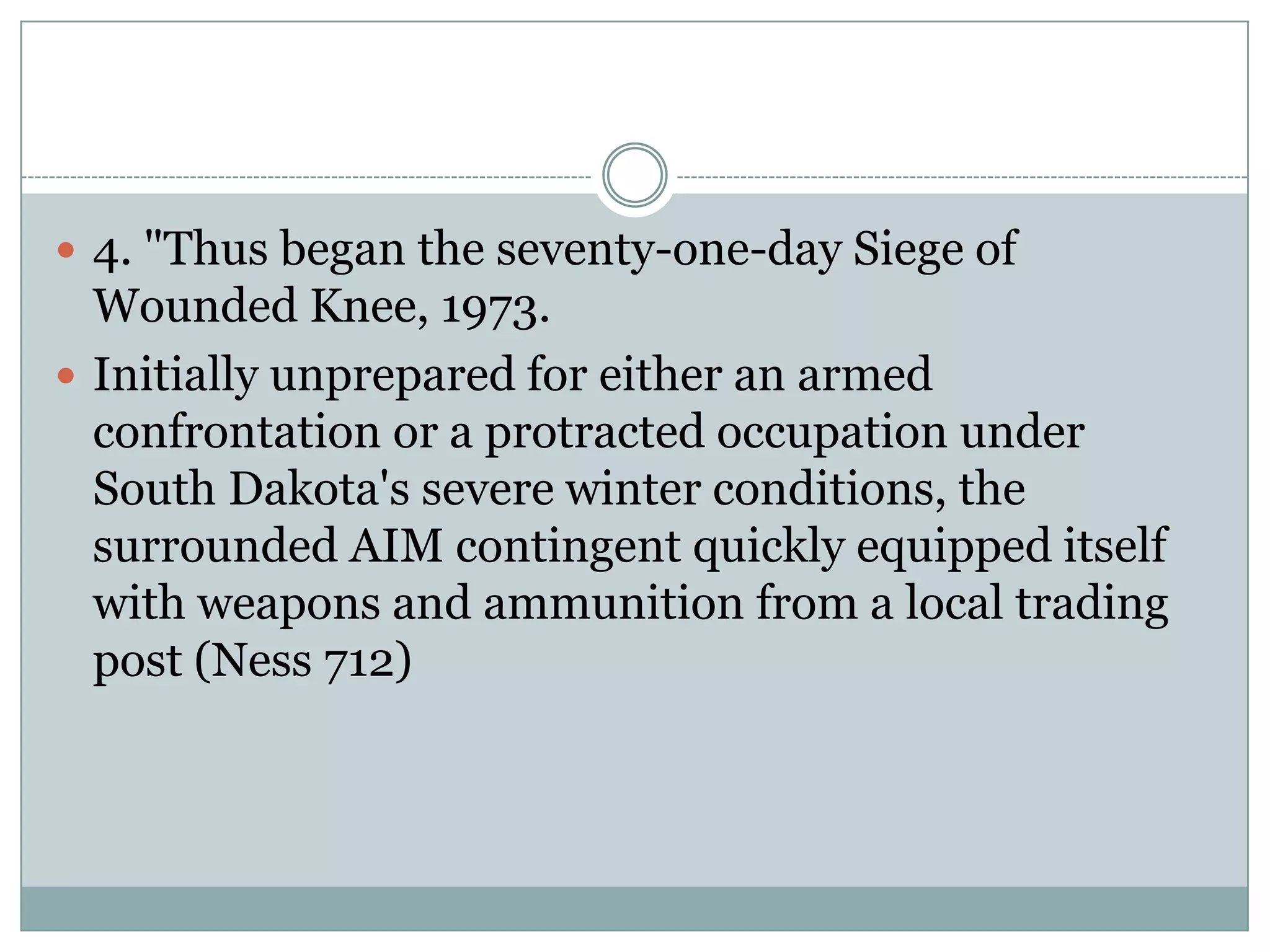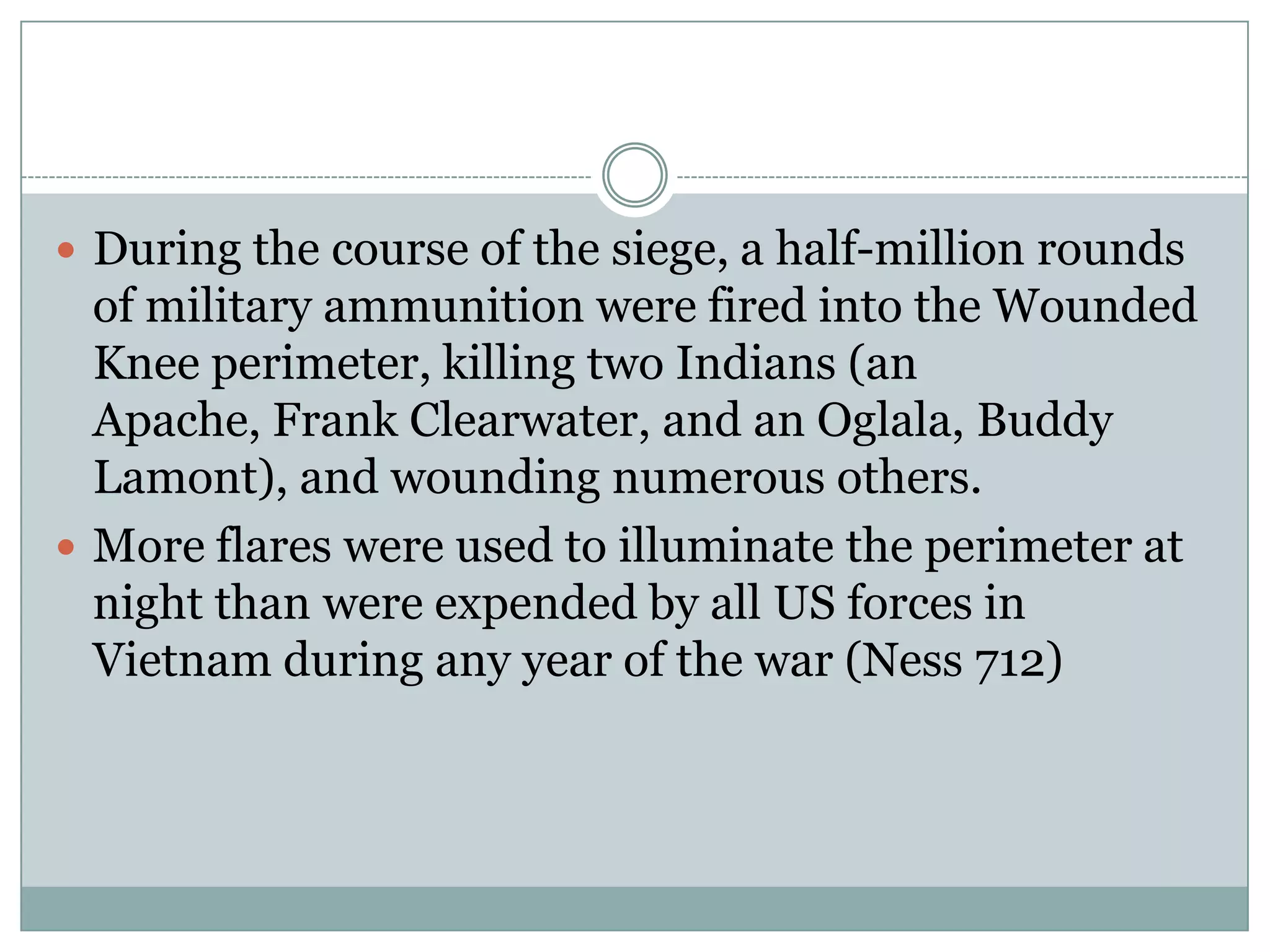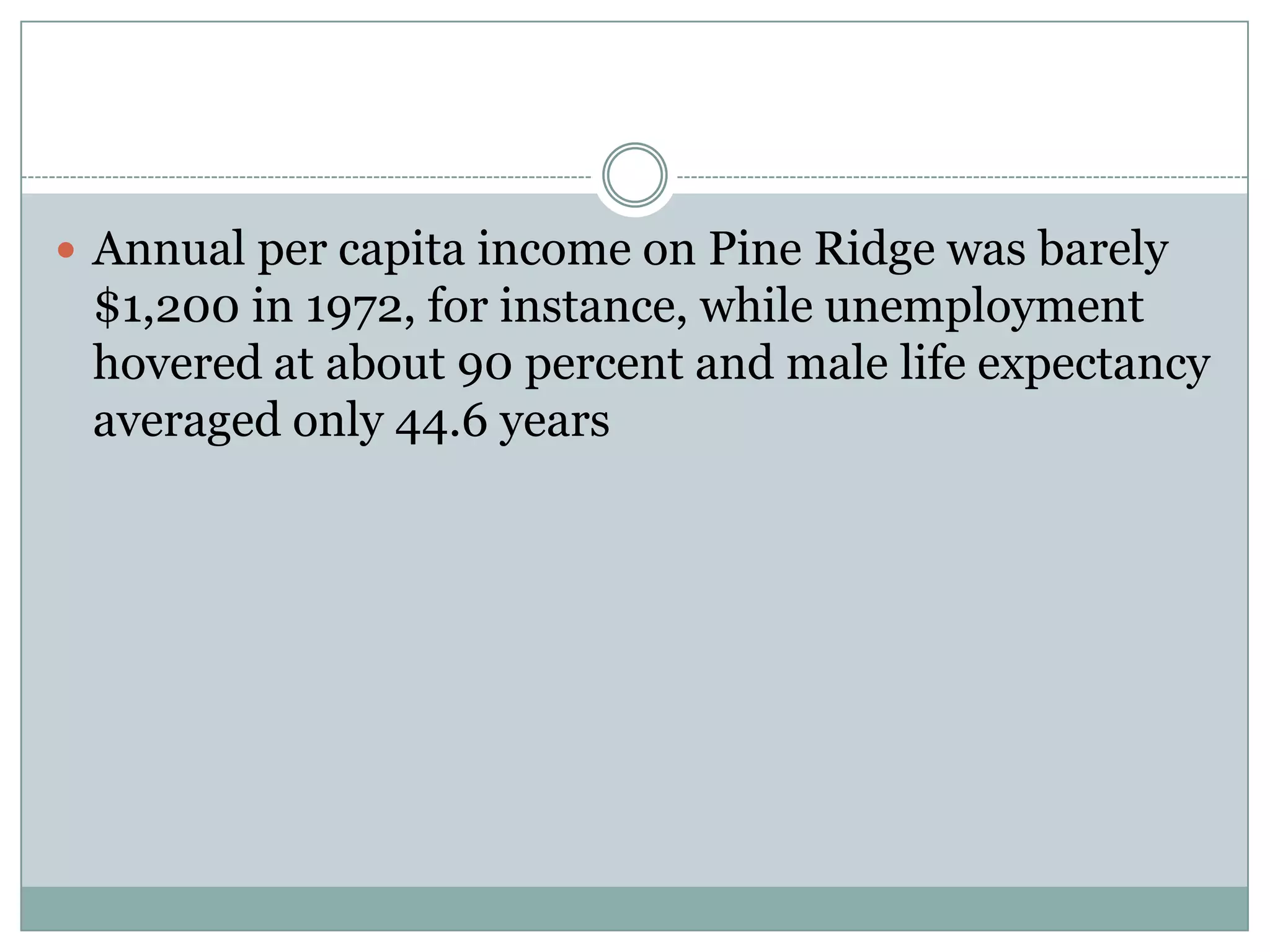Members of the American Indian Movement occupied the site of the Wounded Knee massacre to hold a press conference about conditions on the Pine Ridge Reservation. However, they were blocked in by guards set up by the reservation chairman. This sparked a 71-day armed standoff between AIM members and federal authorities. Over 500,000 rounds were fired during the siege, killing 2 and wounding others. The siege drew international attention to poverty and rights issues facing Native Americans.










